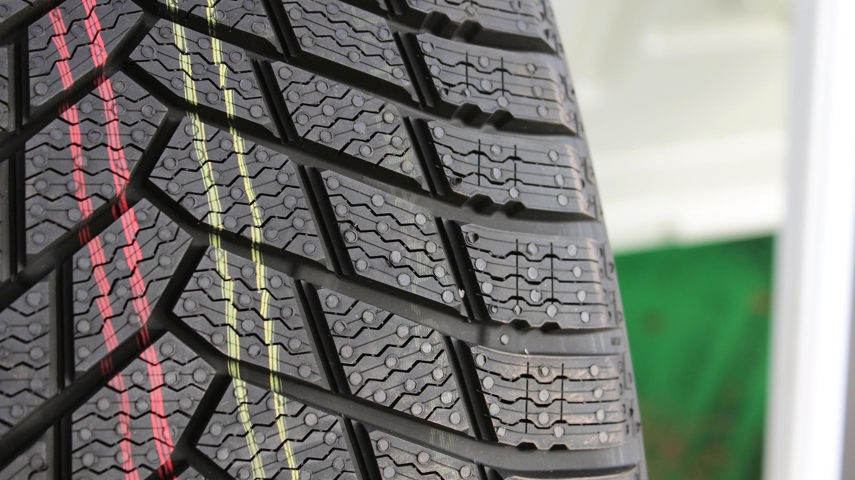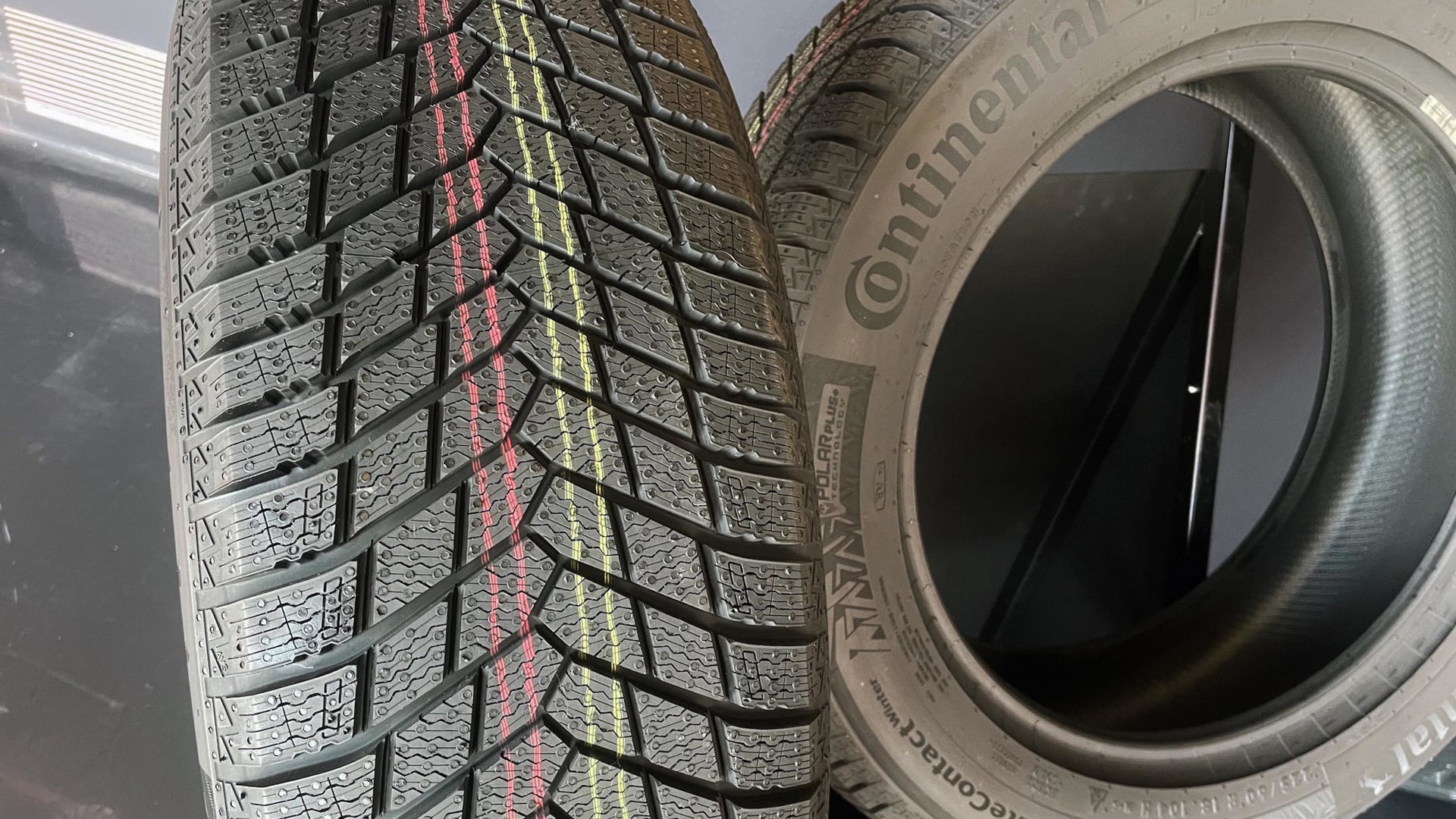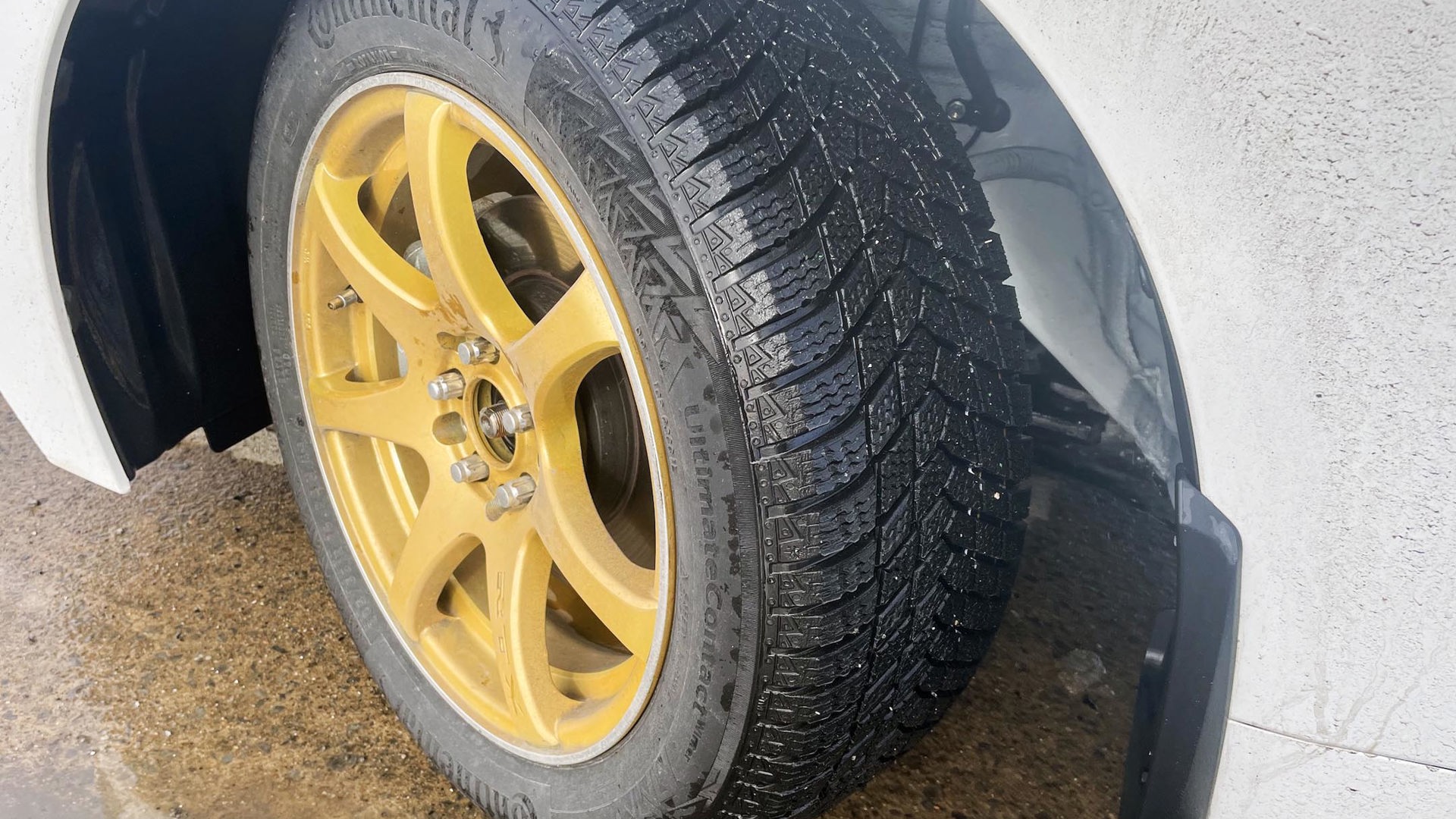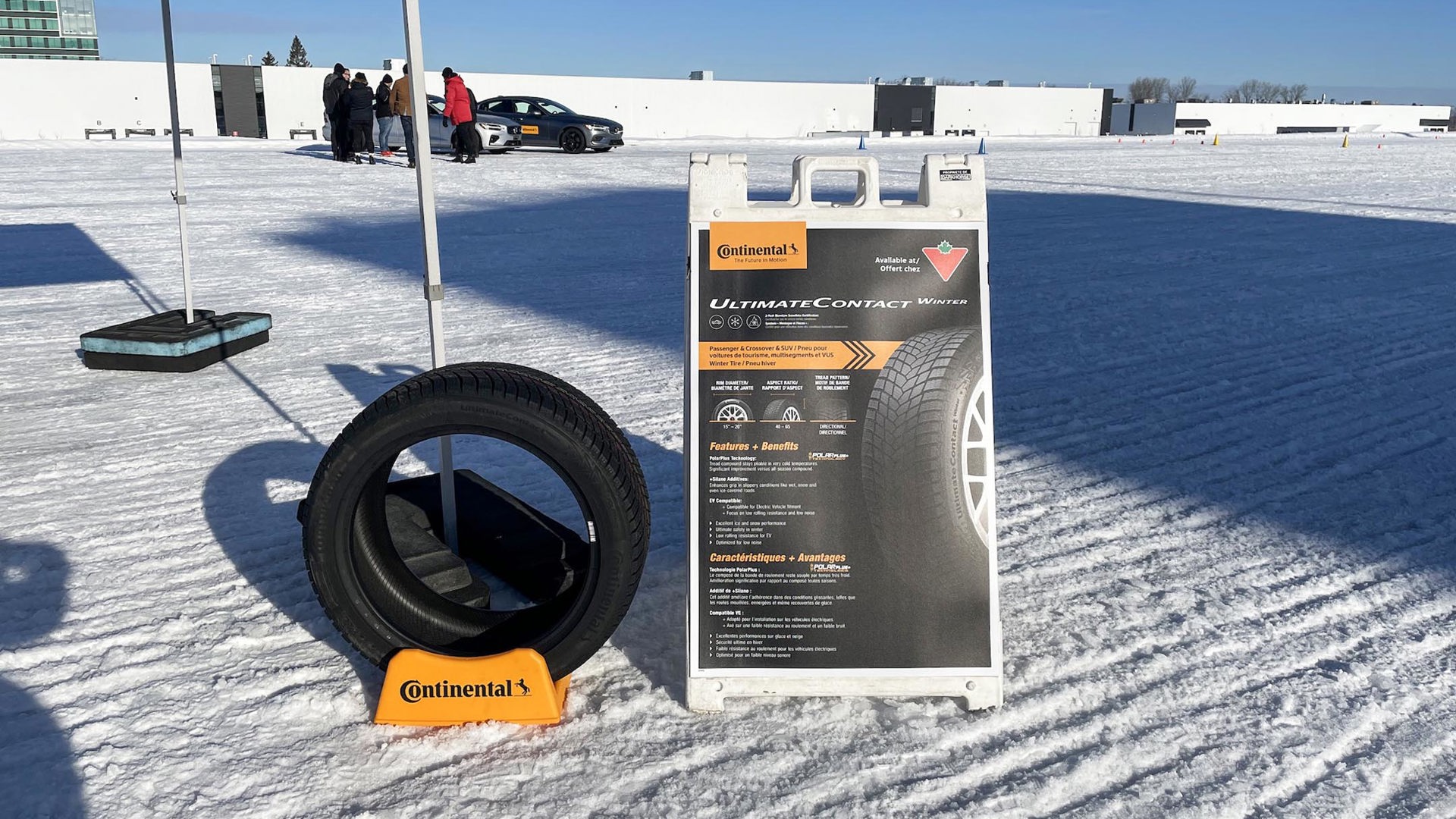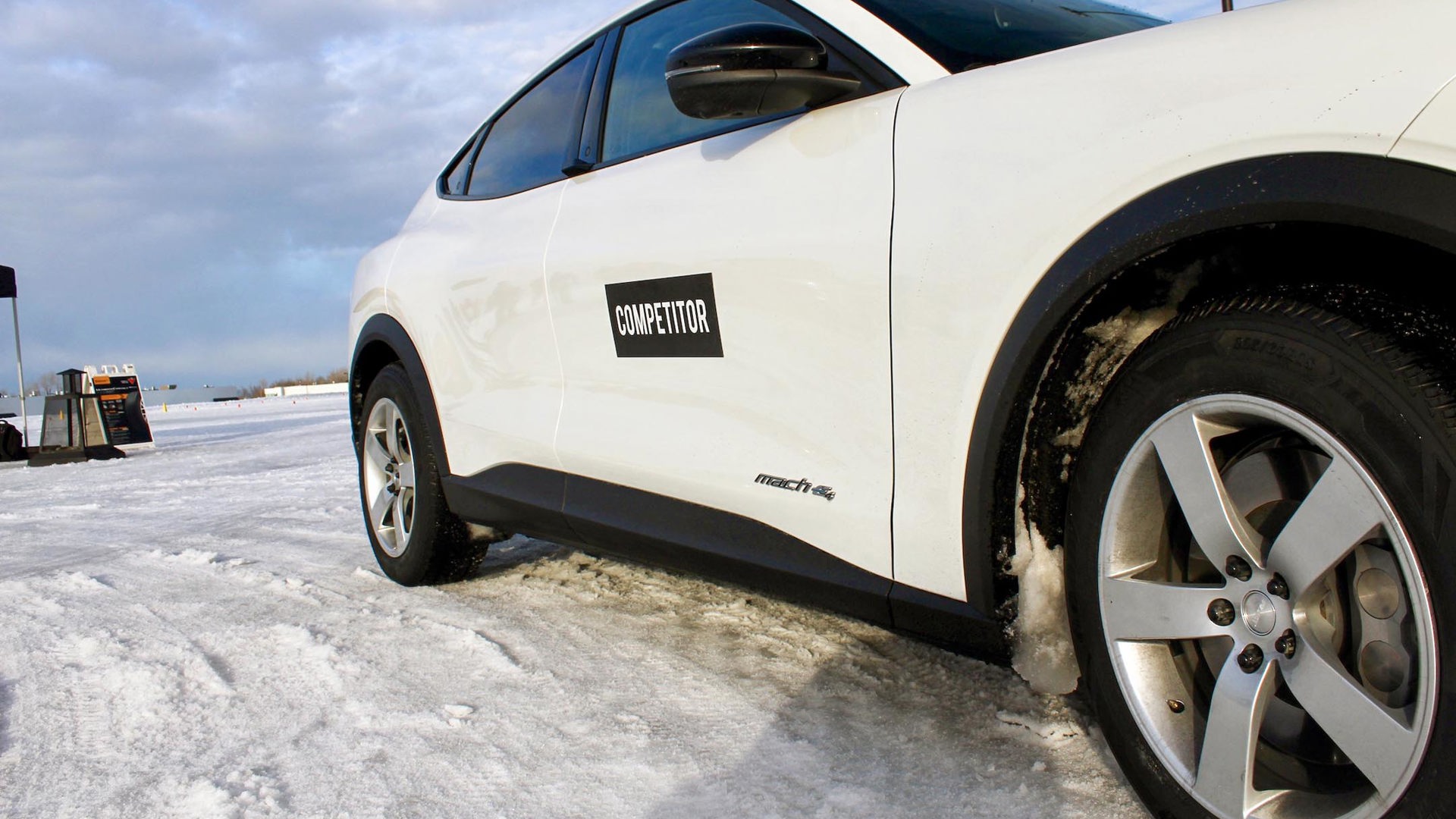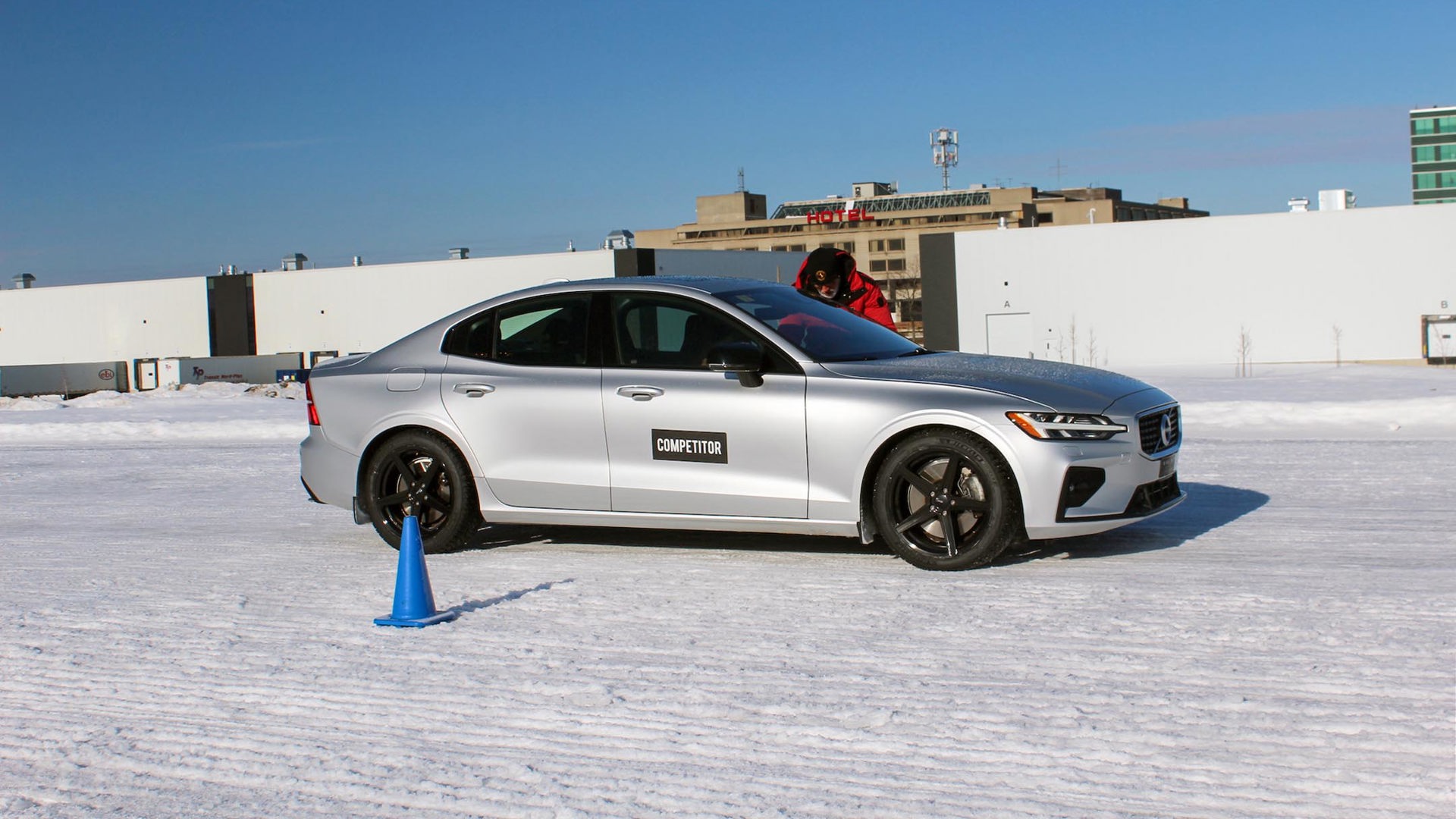Continental Tires, in partnership with Canadian Tire, will launch an all-new directional winter tire in 2024. Called the Continental UltimateContact Winter, it will replace the WinterContact Si that was originally launched in 2015. Sold only at Canadian Tire stores, the UltimateContact Winter has a unique tread pattern and compound. Positioned as a premium product with cutting-edge technology, AutoTrader got a chance to put it through its paces while comparing it to some top competitors at an event hosted by Continental and Canadian Tire at the snowy iCar Mirabel Motorsport Complex just north of Toronto.
But before we get to our impressions of the Continental UltimateContact Winter, let’s answer a few questions about winter tires.
Why Do I Need Winter Tires?
We live in Canada, and while certain parts of our great land might not be getting as much snow as usual (some are getting more), it’s still a cold place in winter. All-season tires are a rolling compromise that start losing grip when temperatures dip below 7 degrees C. Think of a hard hockey puck sliding over the ice, and you get the picture. Be it snow, ice, slush or just cold pavement, winter tires can reduce stopping distances by 25 per cent. That stretch of road could be the difference between a close call and a nasty collision. And don’t forget, the winter tire’s extra traction applies equally to cornering and acceleration.
What Differentiates a Winter Tire from an All-Season Tire?
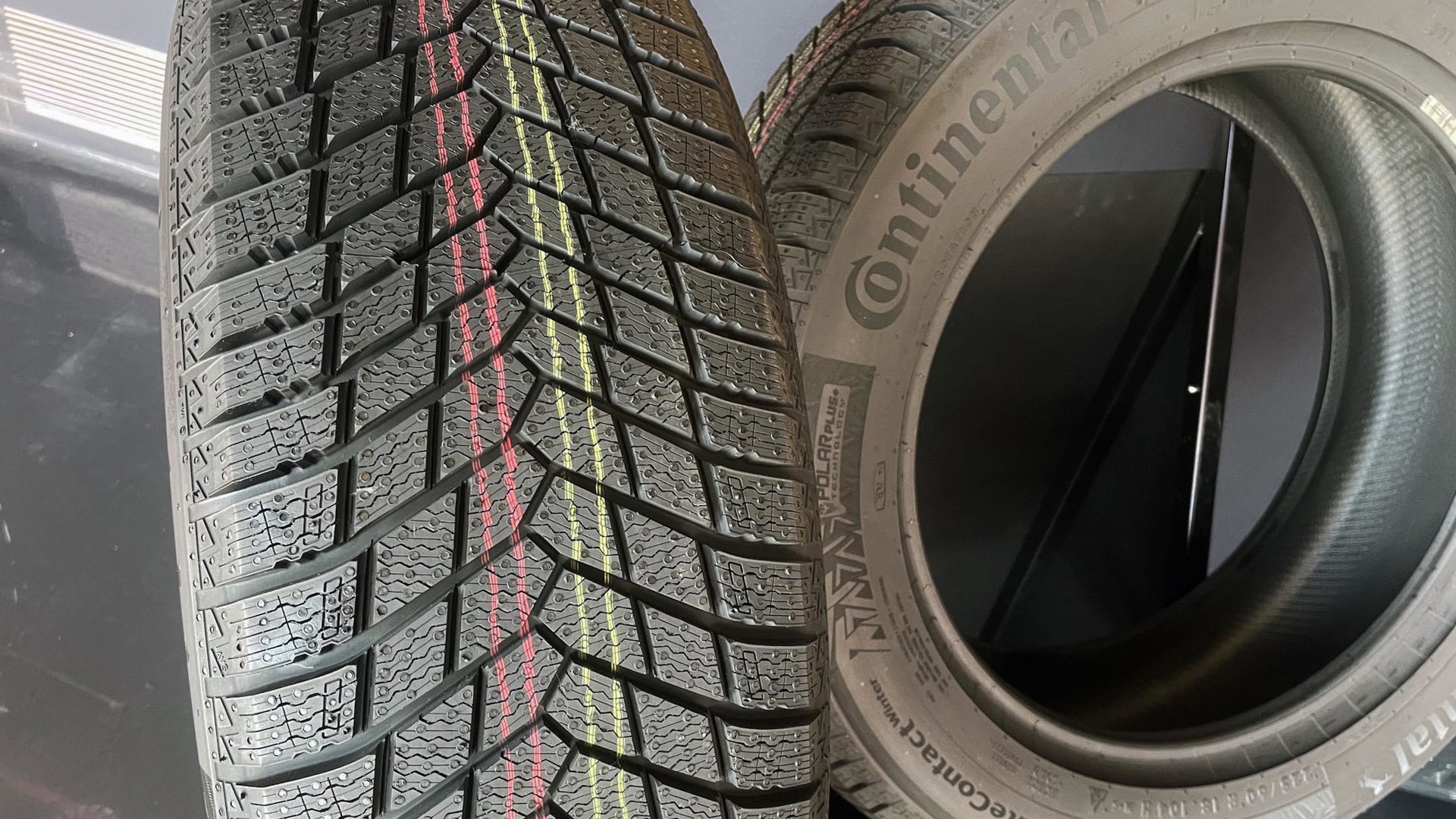
Three distinct elements characterize winter tires – tread compound, tread pattern, and sipes. The science of winter tire construction has taken considerable strides in recent years, so the days of knobby winter tires with massive tread blocks that squirm and whine like your kid at the dentist are long gone. Winter tire tread compounds are the tire industry’s complex secret sauce – treads need to stay flexible in sub-zero temperatures, latch onto icy surfaces, resist wear, and provide low rolling resistance to benefit fuel economy.
Winter tires have more natural rubber than all-season and summer tires, and they also contain silica (like sand) that gives them more bite. But it goes deeper than that – there’s mad science here, with tire companies adding such ingredients as natural oils, ground walnut shells, orange peels, etc. to improve bite. Most tire manufacturers don’t patent their formulas because that requires revealing what’s in them. And you thought Colonel Sanders kept his cards close to his chest.
A winter tire’s tread pattern focuses on attaining grip on roads covered in snow. The snow gets pressed into the grooves between the tread blocks and bonds with the snow on the road surface, providing traction. The wider grooves of a winter tire also help with driving through slush.
And so do the sipes. These are the little micro-grooves you see in the tread blocks. They form numerous gripping edges and keep the tread block flexible. While also gripping snow, the sipes are a good defence against slipping on ice – their edges cut through the water film, which is generated when the tire drives over ice.
My Vehicle Has All-Wheel Drive, So I Don’t Need Winter Tires. Or Do I?
You might have all-wheel drive, but not “all-wheel stop” – AWD does nothing to help your car stop faster. The physics still apply. While AWD will certainly aid in getting a vehicle moving and possiblly pull it out of trouble, it’s still just those four small tire contact patches that do the work when braking or bending into a snowy corner. An all-wheel drive vehicle fitted with winter tires is your best defence against winter.
Do Winter Tires Make Financial Sense?

A set of winter tires and accompanying wheels (be they steel or alloy) represent a significant financial investment, but for those who plan on keeping their vehicles for an extended period, this strategy makes perfect financial sense. Aside from the obvious safety benefits, having two sets of tires means prolonging the life of your summer and/or all-season tires. Some insurance companies might also give you discounts on your car insurance if you have winter tires. In the end, the investment in winter tires is an investment in the safety of you and your family, which should always be easy to justify.
Can You Tell Me Some Nerdy Technical Stuff About Winter Tires?
Did you know that on hard-packed snow or ice, a tire’s tread compound accounts for about 80 per cent of traction? Put some fresh snow atop that hard-packed stuff, and the tire’s tread compound and tread block/sipe elements share the duties. For deep, fresh snow, the tread blocks and sipes do about 80 per cent of the work.
How Long Will Winter Tires Last?
Due to their softer compounds, winter tires will wear out faster than harder compound all-season rubber. The sipes are the first to lose their effectiveness, followed by the tread blocks. The tire’s tread compound is not really affected by wear. The Continental UltimateContact has a tread wear indicator. Once the tread depth wears down to 5/32 of an inch, the Winter Indicator becomes level with the surface of the tread pattern. In some countries, a depth of 5/32 of an inch is the legal limit for winter tire wear, although Canada has no such restrictions.
What Do The M+S and “Snowflake on the Mountain” Markings on Tires Mean?
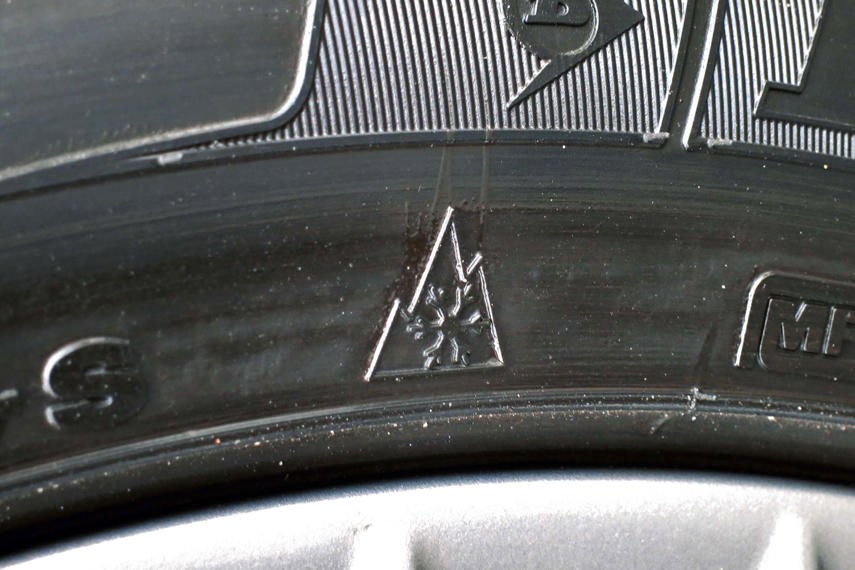
According to Continental: “The vast majoring of passenger and light truck tires in Canada and the US are marked M+S regardless of what kind of tread pattern they have. Therefore, the “Snowflake on the Mountain” symbol has been introduced, with defined testing conditions and minimum requirements. A tire with this symbol has 10 percent better traction on snow than a standard reference tire.”
Can You List Canadian Regions in Order of Winter Tire Adoption?
Quebec is at 100 per cent because winter tires are mandatory by law; the Atlantic provinces are at 94 per cent; British Columbia and Alberta are at 73 per cent; Ontario is at 67 per cent; Manitoba and Saskatchewan are at 64 per cent. The national average is 76 per cent.
Why Does Continental Tire Have a Horse for its Logo and How Did the New Winter Tires Perform?
The Continental company was founded in Hanover, Germany, on October 8, 1871. As a manufacturer of soft rubber items, one of its first products was hoof buffers for horses.

Continental presented three wintry comparison exercises for us, with its new UltimateContact Winter facing off against some major competitors over mixed conditions to test acceleration, braking, slalom agility, and lateral grip. It’s a given that on an event like this, Continental and Canadian Tire are not going to show their new winter rubber in a bad light, yet the fact that they brought top-tier rivals Bridgestone Blizzak, Michelin X-Ice, and Goodyear WinterCommand Ultra to this event shows confidence in their product. And it is warranted. As good as these proven rivals are, the newbie UltimateContact Winter showed superior steering turn-in and lateral grip under all the conditions presented. Braking distances were pretty consistent across the board, but this fresh Continental was a more confident handler.
Canadian Tire has its new Continental winter tire slated for an August 2024 release, and as with the tire it replaces, the UltimateContact Winter will be priced less than the top-tier offerings from Bridgestone, Michelin, and Goodyear. Additionally, the Canadian Tire marketing folks hinted that it will be initially offered at a 25 per cent discount.
